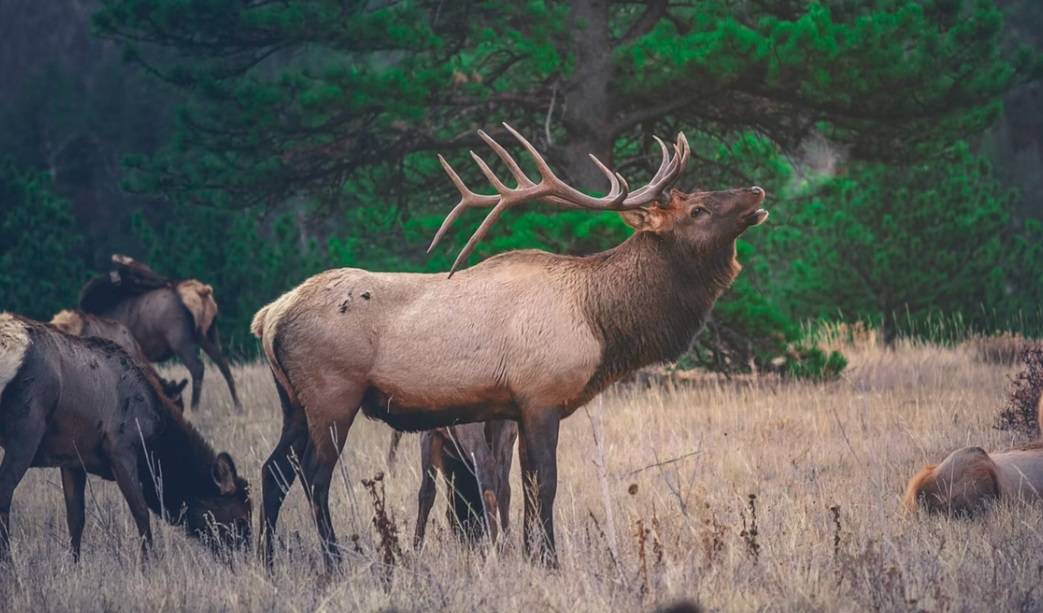What Does Elk Meat Taste Like?
Elks are the largest animals in the deer family. They are mainly found in North America, New Zealand, and northeast Asia, either in the wild or on farms. Due to their limited availability, many have not had a chance to eat some elk meat. If you haven’t eaten elk meat before, you may wonder what elk meat tastes like.
Does it taste like beef, deer meat, or moose meat? Is the meat gamey? Is it tough or tender? Is its taste tender or tough? How do you cook it, and what kind of recipes can you use it in. Are there any risks associated with consuming elk meat? Where do you get the best quality elk meat?
This article answers these and more questions.
Elk Meat Taste
Elk meat has a similar look and taste to beef, only that it is darker, leaner, and more flavorful. It has lower fat content than beef. Some people also say that it tastes a bit like deer meat.
Its taste is rich but mild, making it suitable for most recipes. Its exact taste and flavor are influenced by the method of preparation and cooking.
Its taste is also influenced by whether the elk is farm-raised or wild. Grass-fed elk is more tender and flavorful than wild elk meat, which has a gamey taste.
Taste of Various Elk Meat Cuts
- Tenderloin. It is the most expensive elk meat cut. It is soft-textured and has a lightly sweet flavor.
- Sirloin. Excellent for grilling or making elk meat stew. If you are giving elk meat a trial for the first time, go for sirloin. It is tender, juicy, and has a rich flavor.
- Saddle. The saddle comprises rib racks, back straps, and half loins. These parts taste a lot like beef. They are quite tender.
- Chops. They are milder than other parts. The best method for cooking them is braising for a melt-in-mouth texture.
- Ribs. They have a rather gamey taste but are still delicious. They have an earthy flavor. When correctly cooked, the meat falls off the bone.
- Flank. This is one of the fattiest parts of elk meat. It can be cooked like steak or cut into bite-size pieces. It has a slightly gamey taste. This cut makes perfect carne asada, fajitas, and tacos.
- Haunch. Refers to the hind leg or hump. The tenderness level on this cut varies from one animal to another depending on its age and whether it is farm-raised or wild. Wild elks tend to have tougher hind legs and humps as they develop strong muscles in the area due to moving around a lot.
- Shoulder and belly. Tend to be tougher than the hips. They are generally the largest cuts and are sold as chunks. They make great steak cuts for roasting or grilling. However, they contain tough muscles and connective tissues. Therefore, they should be slow cooked to make them tender and retain favor.
- Brisket. Refers to cuts from the chest areas of the elk. They also make suitable cuts for grilling and toasting and require tactful cooking to prevent them from becoming dry and tough.
- Offal and organ meats. They have a higher content of vitamins and minerals. However, they can be quite challenging to find.
Elk Meat Nutrition
According to the US Department of Agriculture’s National Nutrient Database, a 3.5 ounce serving of Elk meat contains 148 calories. It consists of 26g fat, 30.6g protein, and no carbohydrates.
It also contains many essential micronutrients, including iron, selenium, phosphorous, riboflavin, thiamine, Vitamin B-12, zinc, niacin, and sodium. Notably, a serving delivers 37%, and 23% daily recommended intake of zinc and niacin, respectively.
Therefore, if you are keen to up your protein intake while keeping cholesterol and saturated fat levels low, elk meat is a great option.
Elk Meat vs Bison Meat vs Deer Meat vs Moose Meat
If the bison is farm-raised, you may not be able to tell the difference between bison and elk meat. Like elk meat, bison meat has many nutrients, including iron, B vitamins, and zinc. However, elk meat is leaner and has higher protein content.
On the other hand, deer meat has an intensely gamey taste that makes it unpalatable to people who are not used to it. In addition, deer meat has to be cooked skillfully as it can become tough, dry, and lacking in flavor.
Moose meat is only available as game. It is tough, gamey, and lean, and some people find it unpalatable.
How to Cook Elk Meat
Elk meat can be cooked by most conventional methods, including grilling, broiling, roasting, and frying. It can be used in a wide range of recipes. The most common ones include elk burgers or grilled elk.
Tough parts can be ground and used to make sausages or minced meat recipes. A combination of ground pork, beef, and elk meat brings out a rich, delicious flavor. You can use elk meat as a substitute in classic beef recipes.
Meat cooking experts say that the secret to perfectly flavorful elk meat is cooking it either slow and low or fast and hot. You can use a marinade to keep the meat flavorful and tender. However, overcooking can make it tough and dry. When cooking it, use a meat thermometer to ensure that its temperature does not exceed 60C (140F).
If you had frozen your elk meat, thaw it in the refrigerator for 1-2 days before cooking it. Gradual thawing ensures that the meat does not lose moisture. Allow the meat to rest for a few minutes before cooking it. Place the frozen meat in a plastic bag for faster thawing and run cold water over it.
Is Elk Meat Venison?
Venison refers to meat from animals in the deer family, such as moose, antelope, elk, and deer. Therefore, elk meat is technically venison. However, some people don’t like to categorize elk meat as venison as it is not as gamey as meat from the other deer family animals.
Are There Risks of Consuming Elk Meat?
Elk meat is high in sodium. A 3oz serving contains about 318g of sodium, which is too high for people on a low-sodium diet.
Like other types of meat, handling or consuming uncooked or undercooked elk meat poses the risk of foodborne diseases. Ensure that your elk meat is well cooked before consuming it. If you are not cooking it immediately, store it in a refrigerator or freezer to prevent it from going bad.
In the case of wild elk meat, it can contain harmful parasites and pathogens that can be passed down to humans. It is best to avoid processed elk meat, such as cured, smoked, or salted meat, as it is more prone to contamination. Keep in mind that excessive consumption of red meat, including elk meat increases the risk of coronary heart disease and other chronic diseases.

Where to Buy Elk Meat
Many suppliers provide elk meat across the US through specialty butchers and local grocery stores. However, while you may find some in your local grocery stores, it is best to buy from specialty butcheries.
Some elk farmers and butchers have now started selling the meat online, whereby the meat is shipped frozen to your location. Only buy from reputable suppliers.
The best elk meat comes from farm-raised, grass-fed elk. It is organic, hormone, and antibiotic-free.
Elk meat is generally more expensive than beef, lamb, chicken, pork, and other types of meat that are more readily available. A pound of elk meat can cost up to 50 pounds. If you consume elk meat regularly and have a big freezer, you might want to buy in bulk at a discount and store.
Elk Meat Recipes
Below are some ideas for elk meat recipes to try out:
- Elk meatloaf
- Elk burger
- Elk sausages
- Slow-cooked elk and vegetable stew
- Elk casserole
- Elk skillet lasagna
- Marinated elk steak
- Ground elk and mushroom stew
- Stuffed elk cabbage rolls
- Pan-seared elk
- Elk fajitas
- Elk tacos
- Elk meatballs
- Elk meat patties
- Elk meat soup
Conclusion
Although elk are not the most readily available type of meat, you will definitely enjoy it if you get your hands on some. It is flavorful and delicious and can be made easily at home using various cooking methods, including grilling, searing, roasting, broiling, boiling, and frying.
It makes a great substitute for beef meat and can be incorporated into various recipes. It is healthier than beef meat as it is leaner and has a wider range of nutrients. Always buy elk meat from reputable suppliers and store it appropriately to avoid contamination.






